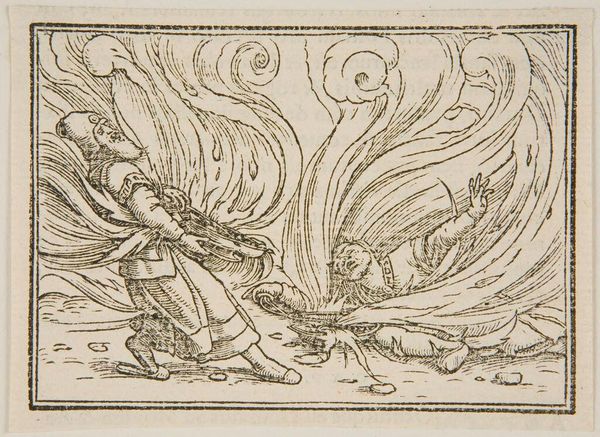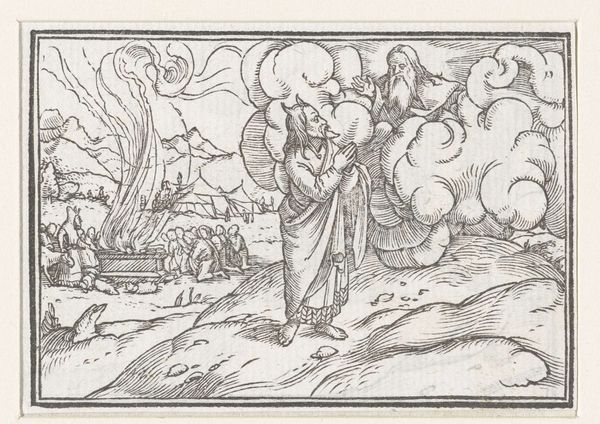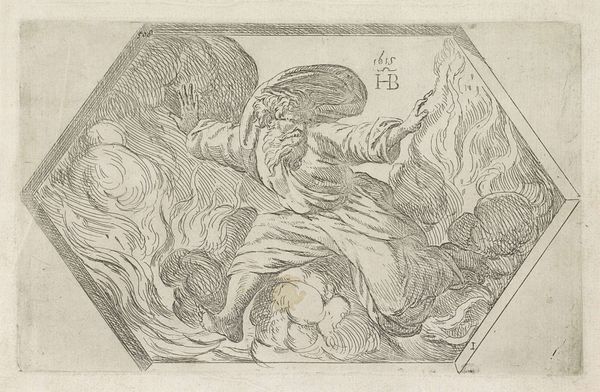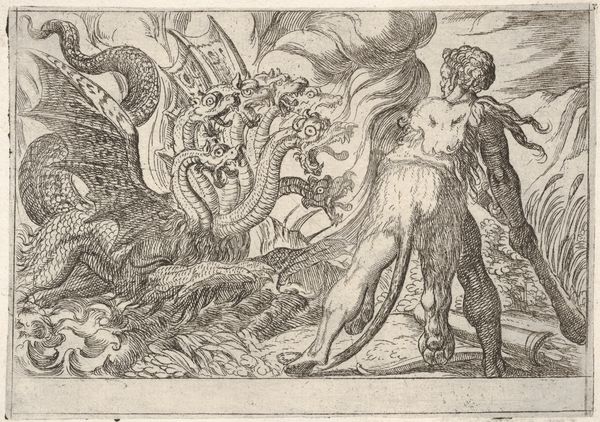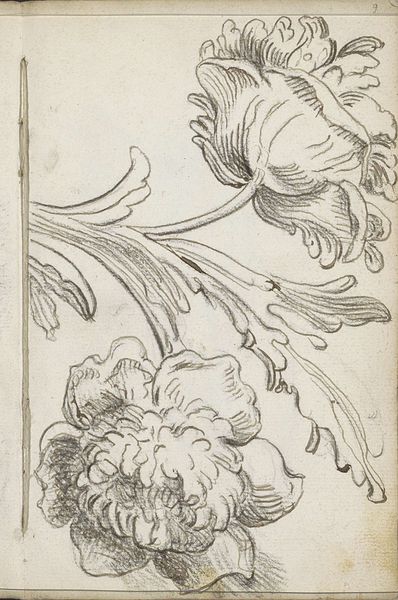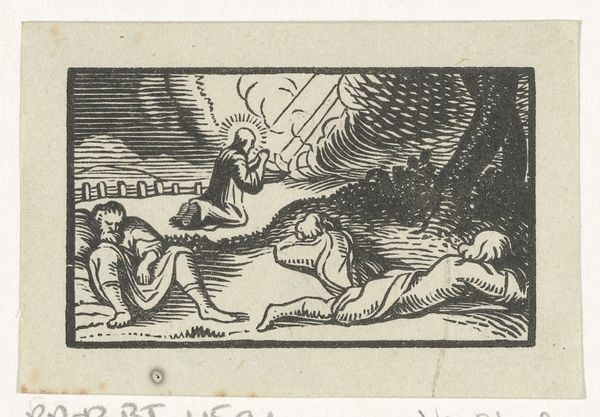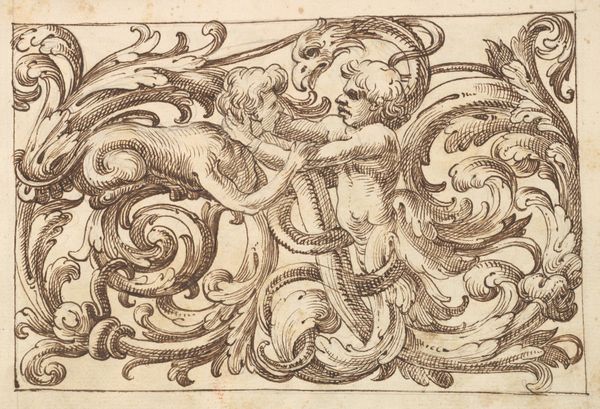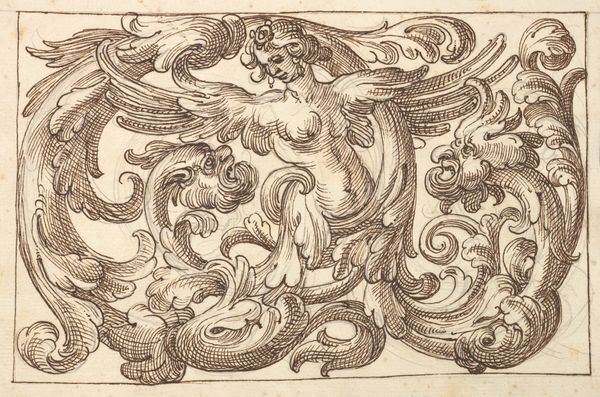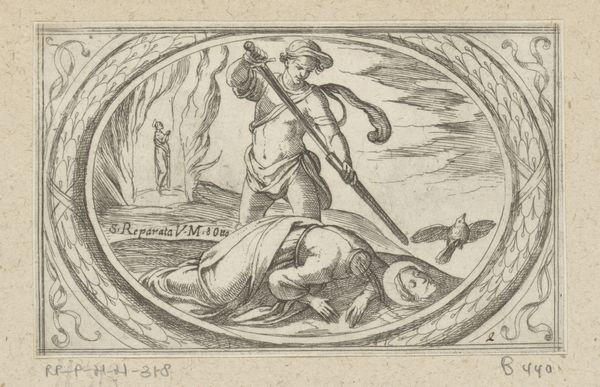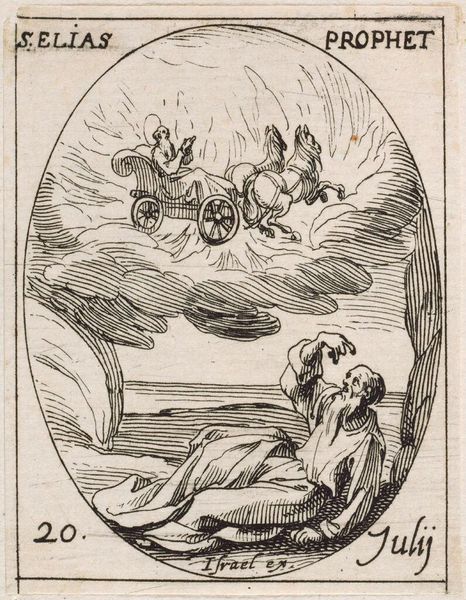
drawing, print, ink, woodcut
#
drawing
#
narrative-art
#
pen drawing
# print
#
pen illustration
#
pen sketch
#
figuration
#
ink line art
#
ink
#
pen-ink sketch
#
woodcut
#
line
#
pen work
#
history-painting
#
northern-renaissance
Dimensions: height 60 mm, width 85 mm, height 83 mm, width 91 mm
Copyright: Rijks Museum: Open Domain
Editor: This is a striking woodcut print by Hans Holbein II from 1538, titled "Nadab and Abihu Killed by Flames." The overwhelming feeling I get is one of intense divine power, and frankly, terror. What underlying narratives do you see in this piece? Curator: Indeed, the terror is palpable, isn't it? Holbein doesn’t shy away from depicting divine punishment. Considering its historical context, it reflects the turbulent times of the Reformation, a period of religious upheaval and re-evaluation of authority. This image, depicting two priests struck down by God, served as a potent visual argument, a warning against straying from doctrine, especially during religious reformation. It powerfully reflects on obedience and consequences in a rapidly changing religious landscape, linking to issues of control and interpretations of divine will. Who gets to interpret divine will? Editor: That makes sense. The Reformation was definitely a time when religious authority was being challenged. So, the print becomes a commentary on that power struggle. It almost seems…didactic? Curator: Precisely! Holbein masterfully uses visual storytelling to underscore the established religious order but if we examine it through today’s perspective, we could also understand this image as questioning abuses of power. We should consider who the intended audience was, what messages they were already receiving. Were they questioning authority? Accepting it? Editor: Viewing it like that does make the print even more interesting. So much of our interpretation of religious imagery is viewed through modern filters. It's fascinating how one image can support the status quo and be read as questioning it. Curator: Absolutely, and it underscores the ever-relevant message about authority, disobedience, and interpretation. These dynamics haven’t disappeared but are very much active in our current socio-political contexts as well. What a powerful dialogue that art offers to us.
Comments
No comments
Be the first to comment and join the conversation on the ultimate creative platform.
